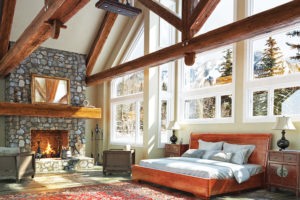The collaboration of cultures has seemed to define much of Terry Reid and Sharon Davies’ lives. Self-described “hippies” and prolific travellers, Davies and Reid have managed to blend the spirit of the West with the arts of the East, and in doing so, have become a paragon of globalization.
As the Soviets entered Afghanistan in December 1979, millions of Afghanis fled across the border into Pakistan, setting up refugee cities along the western border.
Terry Reid, a veteran traveller, went to the home of one of these refugees in the 1990s, a Turkmen friend living in Peshawar. During this visit, he was struck by a central facet of Turkmen life: the loom.
“The heart of the Turkmen home is the loom. This is where women sit together, have throughout their history, and create these rugs, these beautiful works of art,” Reid said.
Turkmen have been weaving rugs for centuries, using local materials and natural dyes. With the Western world hungry for “oriental” accents in their homes, rug factories began popping up, replacing workmanship with commercial production. “Rugs today are made in a program line, where you make it over and over again, the exact same thing,” Reid lamented.

These refugees, displaced and impoverished, were stuck making pale imitations of this art, unable to access the materials necessary to produce traditional Turkmen rugs. In their struggle, Reid and his partner Sharon Davies saw an opportunity that would benefit both their Ketchum business, Davies-Reid, and their refugee friends. The Turkmen weavers had an abundance of skill and dearth of material. Davies and Reid could help the weavers find both suitable materials and a market in which to sell the finished project.
With their on-site manager Mohammed Kamil, Davies and Reid began reviving the tribes’ old skills, seeking out high-mountain, hand-spun wools and raw, natural dyes. They utilized Western money and markets, and Turkmen skills and craft. Their business flourished and grew, with Davies and Reid selling the rugs alongside their other discoveries in their shops, now in Ketchum, Jackson, Wyoming, and Park City, Utah.
The rugs themselves are an emblem of the blending of cultures brought on by Davies and Reid. They have infused the colors of their own lives through their threads, working with the weavers to bring the West into this Eastern art.
“While there is the traditional coloration of the rugs—the reds, blues, purples—what we would do is … take pictures of fields of wheat or weeds, or maroon willows, and look at those colors that came together in nature. That’s where our basis was; our coloration was based on the earth around us,” Reid explained.
Reid and Davies have done research into Navajo art and found that creating a similar aesthetic required “simplifying everything, using very little dye, and natural browns, greys, beiges,” Reid said. Using the hand-spun, high-mountain wool purchased from their Pashtun suppliers and natural dyes allows for variations in the coloration. This ensures “the rugs can look just like a billowing field of wheat,” Reid added. “When we make a rug, you can put it in a house, and it will just blend into the outdoors.”
All of this intermingling has become easier over time as the world has become increasingly connected. Reid both bemoans and delights in this inter-connectedness.
He misses the days of complete disconnection, when a traveler could step into another world without outside interference. The Western world has permeated the rest, transforming former sanctuaries. Reid recalled how it was, “such a real experience traveling to places in the world where there aren’t travelers.” Nowadays, with a smartphone or a laptop, you are never far from home.
On the other hand, this interconnectedness has benefitted his business. He can speak with his vendors, anywhere from Delhi to Peshawar, all from the comfort of his office. This is a far cry from the beginning, when it would take hours, or even a trip across the world, to achieve the same result.
He reminisced, “I remember when faxes came along. It was huge! Even though I would have to sit here for three hours every time I needed to send one. And then all of a sudden email pops up, and all you need is a phone.”
Even though he can now communicate easily with their far-flung branches of business, it is doubtful that either he or Davies will ever give up their discovery trips. Travelling was both the impetus and the most enjoyable part of their business. “With these cultures that you get to live with and work in and understand, bottom line, it’s made for an incredibly interesting life,” he said.

